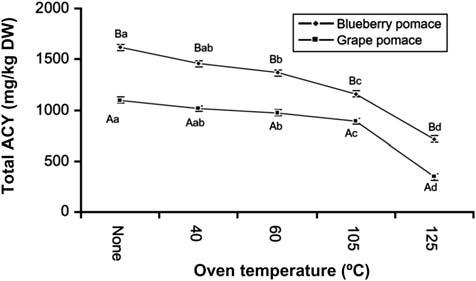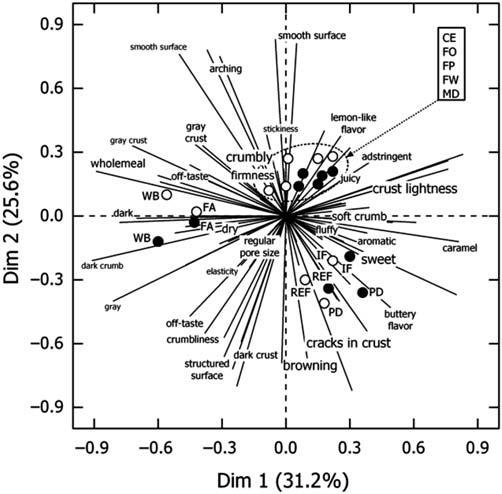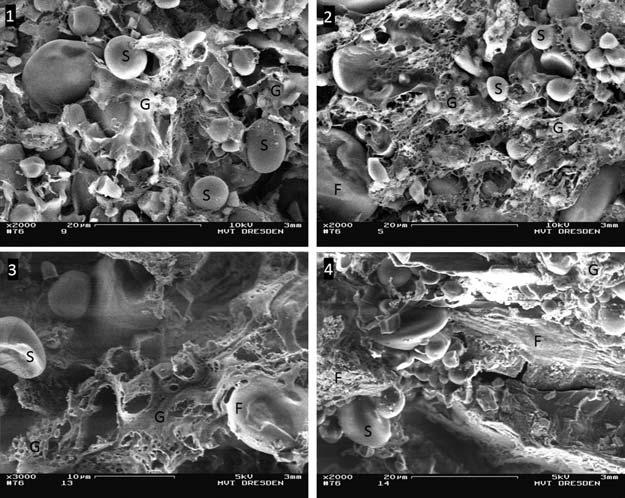https://ebookmass.com/product/valorization-of-fruit-
Instant digital products (PDF, ePub, MOBI) ready for you
Download now and discover formats that fit your needs...
Handbook of Grape Processing By-Products: Sustainable Solutions 1st Edition Galanakis
https://ebookmass.com/product/handbook-of-grape-processing-byproducts-sustainable-solutions-1st-edition-galanakis/
ebookmass.com
The Role of Alternative and Innovative Food Ingredients and Products in Consumer Wellness Charis M. Galanakis
https://ebookmass.com/product/the-role-of-alternative-and-innovativefood-ingredients-and-products-in-consumer-wellness-charis-m-galanakis/
ebookmass.com
Food Waste Recovery: Processing Technologies, Industrial Techniques, and Applications 2nd Edition Charis M. Galanakis
https://ebookmass.com/product/food-waste-recovery-processingtechnologies-industrial-techniques-and-applications-2nd-editioncharis-m-galanakis/
ebookmass.com
Pluralism
and World Order: Theoretical Perspectives and Policy Challenges Feng Zhang
https://ebookmass.com/product/pluralism-and-world-order-theoreticalperspectives-and-policy-challenges-feng-zhang/
ebookmass.com
The Science of Religion, Spirituality, and Existentialism
Kenneth E. Vail Iii
https://ebookmass.com/product/the-science-of-religion-spiritualityand-existentialism-kenneth-e-vail-iii/
ebookmass.com
High Growth Enterprises: The Role of Founder Characteristics and Venture Policies 1st Edition Mathew J Manimala
https://ebookmass.com/product/high-growth-enterprises-the-role-offounder-characteristics-and-venture-policies-1st-edition-mathew-jmanimala/
ebookmass.com
Hasta que la curiosidad nos vuelva gatos 1ª Edition Anaid Liddell
https://ebookmass.com/product/hasta-que-la-curiosidad-nos-vuelvagatos-1a-edition-anaid-liddell/
ebookmass.com
Wreckless
Katie Golding
https://ebookmass.com/product/wreckless-katie-golding-4/
ebookmass.com
Close Ties in European Local Governance: Linking Local State and Society 1st ed. Edition Filipe Teles
https://ebookmass.com/product/close-ties-in-european-local-governancelinking-local-state-and-society-1st-ed-edition-filipe-teles/
ebookmass.com
First Aid for the Basic Sciences. General Principles 3rd Edition Tao Le
https://ebookmass.com/product/first-aid-for-the-basic-sciencesgeneral-principles-3rd-edition-tao-le/
ebookmass.com
ValorizationofFruitProcessingBy-products
Thispageintentionallyleftblank
ValorizationofFruit ProcessingBy-products
Editedby CharisM.Galanakis
Research&InnovationDepartment,GalanakisLaboratories,Chania,Greece FoodWasteRecoveryGroup,ISEKIFoodAssociation,Vienna,Austria
AcademicPressisanimprintofElsevier 125LondonWall,LondonEC2Y5AS,UnitedKingdom 525BStreet,Suite1650,SanDiego,CA92101,UnitedStates 50HampshireStreet,5thFloor,Cambridge,MA02139,UnitedStates TheBoulevard,LangfordLane,Kidlington,OxfordOX51GB,UnitedKingdom
Copyright©2020ElsevierInc.Allrightsreserved.
Nopartofthispublicationmaybereproducedortransmittedinanyformorbyanymeans,electronicormechanical,including photocopying,recording,oranyinformationstorageandretrievalsystem,withoutpermissioninwritingfromthepublisher. Detailsonhowtoseekpermission,furtherinformationaboutthePublisher’spermissionspoliciesandourarrangements withorganizationssuchastheCopyrightClearanceCenterandtheCopyrightLicensingAgency,canbefoundatourwebsite: www.elsevier.com/permissions .
ThisbookandtheindividualcontributionscontainedinitareprotectedundercopyrightbythePublisher(otherthanasmaybe notedherein).
Notices
Knowledgeandbestpracticeinthisfieldareconstantlychanging.Asnewresearchandexperiencebroadenourunderstanding, changesinresearchmethods,professionalpractices,ormedicaltreatmentmaybecomenecessary.
Practitionersandresearchersmustalwaysrelyontheirownexperienceandknowledgeinevaluatingandusinganyinformation, methods,compounds,orexperimentsdescribedherein.Inusingsuchinformationormethodstheyshouldbemindfuloftheir ownsafetyandthesafetyofothers,includingpartiesforwhomtheyhaveaprofessionalresponsibility.
Tothefullestextentofthelaw,neitherthePublishernortheauthors,contributors,oreditors,assumeanyliabilityforanyinjury and/ordamagetopersonsorpropertyasamatterofproductsliability,negligenceorotherwise,orfromanyuseoroperationof anymethods,products,instructions,orideascontainedinthematerialherein.
BritishLibraryCataloguing-in-PublicationData
AcataloguerecordforthisbookisavailablefromtheBritishLibrary LibraryofCongressCataloging-in-PublicationData
AcatalogrecordforthisbookisavailablefromtheLibraryofCongress
ISBN:978-0-12-817106-6
ForInformationonallAcademicPresspublications visitourwebsiteat https://www.elsevier.com/books-and-journals
Publisher: CharlotteCockle
AcquisitionEditor: NinaRosadeAraujoBandeira
EditorialProjectManager: KaterinaZaliva
ProductionProjectManager: NileshKumarShah
CoverDesigner: MarkRogers
TypesetbyMPSLimited,Chennai,India
1.Fruitprocessingby-productsas foodingredients1
SusanneStruckandHaraldRohm
1.1Introduction1
1.2Processingoffruitby-products2
1.2.1Pomaceprocessingconditions2
1.2.2Influenceofprocessingonpomace composition3
1.3Technofunctionalandphysical propertiesofprocessedfruitpomace4
1.3.1Pomaceasasourceofdietary fiberandbioactivecompounds4
1.3.2Roleofdietaryfiberinthehuman nutrition4
1.3.3Physicalpropertiesofprocessedfruit pomace5
1.4Applicationoffruitpomaceinbaked products6
1.5Pasta9
1.6Meatproducts10
1.7Conclusion12 References12
2.Apple17
SenkaVidovi ´ c,AleksandraTepi ´ cHorecki, JelenaVladi ´ c,Zdravko ˇ Sumi ´ c, AleksandraGavari ´ candAnitaVakula
2.1Apple17
2.2Applefruitprocessing18
2.2.1Applefruitjuiceproduction18
2.2.2Concentratedfruitjuiceproduction25
2.2.3By-productsofapplefruitjuice production26
2.2.4Otherappleprocessing—applecontainingfruitfiltertea productionandby-product remaining27
2.3Possibilitiesofapplicationofapple processingby-products28
2.3.1Pectin29
2.3.2Valorizationofappleby-products throughantioxidantsextraction32
2.4Conclusion37 References37 Furtherreading42
3.Apricot43
Estefanı´aGonza ´ lez-Garcı´a,Marı´aLuisaMarina andMarı´aConcepcio´nGarcı ´ a
3.1Introduction43
3.2Apricotkernel44
3.2.1Kerneloil44
3.2.2Kernel:skinandpresscake52
3.2.3Essentialoil55
3.3Otherapricotby-products56
3.3.1Pomace56
3.3.2Thinnedapricots58
3.3.3Blanchingwaterconcentrateand debitteringwaterconcentrate58
3.4Applicationofapricotby-products58
3.5Conclusionsandfuturetrends61 Acknowledgments61 References61
4.Avocado67
HueyShiLye,MeiKyingOng,LaiKuanTeh, ChewCheenChangandLooKeatWei
4.1Introduction67
4.2Nutritionalcomposition70
4.3Extractionofphytochemicals72
4.4Healthbenefits74
4.4.1Antioxidanteffect74
4.4.2Anticancer78
4.4.3Antidiabetic80
4.4.4Antiatherogenic81
4.4.5Antimicrobialeffect84
4.4.6Antiinflammatoryeffect86
4.5Industrialapplications88
4.6Conclusion89 References89 Furtherreading93
5.Berries95
PetrasRimantasVenskutonis
Abbreviations95
5.1Introduction96
5.2Compositionofberrypomace97
5.2.1Cellwallpolysaccharides, proteins,andminerals97
5.2.2Berrypomaceandseedoil99
5.2.3Phytochemicalcompositionand bioactivitiesofpomace102
5.3Processingofberrypomace108
5.3.1Postpressingpreparationofberry pomaceforprocessing108
5.3.2Extractionofvariousconstituents fromberrypomace109
5.4Applicationofberrypomaceproducts116
5.4.1Applicationsofdried berrypomace117
5.4.2Applicationsofberrypomace extracts118
5.4.3Encapsulationofpomace ingredients119
5.5Conclusion120 Acknowledgments120 References120 Furtherreading125
6.Chestnut127
DianaPinto,NairBraga,AnaMargaridaSilva, PauloCosta,CristinaDelerue-Matos andFranciscaRodrigues
Abbreviations127
6.1Introduction128
6.2 Castaneasativa by-products128
6.2.1Leaves129
6.2.2Flowers133
6.2.3Shells135
6.2.4Burs137
6.3Futureperspectives140
6.4Conclusion140 Acknowledgments141 References141
7.Citrusfruits145
DebajyotiKundu,MohanDas,ReddhyMahle, PrithaBiswas,SandipanKarmakarandRintu Banerjee
7.1Introduction145
7.2Citrusfruitwastegenerationand management146
7.3Valorizationofcitruswaste148
7.3.1Recoveryof phytochemicals/bioactive compounds148
7.3.2Recoveryofessentialoil151
7.3.3Recoveryofenergy152
7.4Othervalue-addedproducts157
7.4.1Productionofenzymes157
7.4.2Organicacidproduction159
7.4.3Dietaryfibersproduction159
7.4.4Productionofsinglecellprotein160
7.4.5Candypreparation160
7.5Bioeconomyconceptincitruswaste valorization161
7.6Futurescope162
7.7Conclusion162 References162 Furtherreading166
8.Mango167
C.H.Okino-Delgado,D.Z.Prado, MileneStefaniPereira,DafneAngelaCamargo, MelianeAkemiKoikeand LucianaFranciscoFleuri
8.1Introduction167
8.2Mangowaste169
8.3Mangopeel170
8.4Mangoseed172
8.5Mangowasteassubstrate174
8.6Prospectsandconclusion177 References177 Furtherreading181
9.Passionfruit183
PramoteKhuwijitjaru andKhwanjaiKlinchongkon
9.1Introduction183
9.2Passionfruitproduction184
9.3Pulpandjuiceprocessing185
9.4Animalfeeding185
9.5Valuablecomponentsfrompeel185
9.5.1Dryingofpeel185
9.5.2Pectinandpecticoligosaccharides186
9.5.3Dietaryfiber189
9.5.4Passionfruitpeelflour190
9.5.5Passionfruitpeelextract190
9.6Valuablecomponentsfromseed191
9.6.1Dryingofseed191
9.6.2Seedoil191
9.6.3PiceatannolandscirpusinB195
9.6.4Otherphenoliccompoundsand antioxidantactivities196
9.6.5Seedprotein196
9.6.6Antifungalprotein196
9.6.7Seedfiber197
9.7Conclusion197 References197
10.Pineapple203
TodorVasiljevic
10.1Introduction203
10.2Pineapplewasteutilization204
10.3Proteinutilizationfrompineapple waste—bromelainenzyme204
10.4Bromelainextractionstrategies209
10.5Membranefiltrationprocessfor bromelainextraction209
10.6Applicationofmembranetechnology inbromelainpurification213
10.7Configurationalconsiderations213
10.8Processingparametersconsiderations216
10.9Bromelainpurity217
10.10Valorizationofcarbohydrates218
10.10.1Insolublefibers—cellulose andhemicellulose218
10.11Solublefibers—pectinandgums218
10.12Simplesugars—productionof organicacids219
10.13Othervalue-addedproducts obtainedfrompineapplewaste219
10.14Conclusion220 References221 Furtherreading225
11.Pinkguava227
YingPingChang,KwanKitWoo andCharlesGnanaraj
11.1Introduction227
11.1.1Aboutpinkguava227
11.1.2Pinkguavaby-products228
11.2Functionalpropertiesand health-promotingeffectsofpinkguava phytochemicalconstituents229
11.3Possibleroutestoupgradepink guavaby-productscommercialization values231
11.3.1Phytochemicalextraction233 11.3.2Prebioticsingredients240 11.3.3Substrateforfermentation241
11.4Processingmethodtominimize thewasteafterextraction242
11.5Constraintsandchallengesin reutilizingpinkguavaby-products245 11.6Furtherresearchtofillthe knowledgegap247 References248
12.Pomegranate253
ShohrehSaffarzadeh-Matin
12.1Introduction253
12.1.1Polyphenolextractionof pomegranatewaste254
12.1.2Assessmentofextraction methodefficiency265
12.1.3Purificationandfractionation268
12.1.4Healthbenefits,safety assessment,andstabilityof pomegranatefruitextract270
12.1.5Concludingremarks272 References273
13.Strawberry281
IsidoroGarcı´a-Garcı´a, M.CarmenGarcı´a-Parrilla, InesM.Santos-Duenas,AlbertMas andAnaM.Canete-Rodrı ´ guez
13.1Introduction281
13.2Developmentofnewproducts285
13.3Usingstrawberriestoobtain fermentedproducts287
13.3.1Processdevelopmentand qualitycontrol287
13.3.2Biotransformationofstrawberry pure ´ eintowineandvinegar288
13.4Conclusions296 Acknowledgments296 References297 Furtherreading300 Index301
Thispageintentionallyleftblank
ListofContributors
RintuBanerjee DepartmentofAgriculturalandFood Engineering,IndianInstituteofTechnology Kharagpur,Kharagpur,India
PrithaBiswas SchoolofMedicalScienceandTechnology, IndianInstituteofTechnologyKharagpur,Kharagpur, India
NairBraga REQUIMTE/LAQV,InstitutoSuperiorde EngenhariadoPorto,InstitutoPolite ´ cnicodoPorto, Porto,Portugal
DafneAngelaCamargo Sa ˜ oPauloState University(UNESP),InstituteofBiosciences, Botucatu,Brazil
AnaM.Canete-Rodrı´guez DepartamentodeQuı´mica Inorga ´ nicaeIngenierı´aQuı´mica,Facultadde Ciencias,UniversidaddeCo ´ rdoba,Co ´ rdoba,Espana
ChewCheenChang DepartmentofChemicalScience, FacultyofScience,UniversitiTunkuAbdulRahman, Kampar,Malaysia
YingPingChang FacultyofScience,Departmentof ChemicalScience,UniversitiTunkuAbdulRahman, NegeriPerak,Malaysia
PauloCosta REQUIMTE/UCIBIO,DepartmentofDrug Sciences,FacultyofPharmacy,UniversityofPorto, Porto,Portugal
MohanDas DepartmentofAgriculturalandFood Engineering,IndianInstituteofTechnology Kharagpur,Kharagpur,India
CristinaDelerue-Matos REQUIMTE/UCIBIO, DepartmentofDrugSciences,FacultyofPharmacy, UniversityofPorto,Porto,Portugal
LucianaFranciscoFleuri SaoPauloStateUniversity (UNESP),InstituteofBiosciences,Botucatu,Brazil
Marı´aConcepcio ´ nGarcı ´ a DepartmentofAnalytical Chemistry,PhysicalChemistryandChemical Engineering,FacultyofScience,ChemicalResearch Institute“Andre ´ sM.delRı´o”(IQAR),Universityof Alcala ´ ,Madrid,Spain
IsidoroGarcı´a-Garcı´a DepartamentodeQuı´mica Inorga ´ nicaeIngenierı´aQuı´mica,Facultadde Ciencias,UniversidaddeCo ´ rdoba,Co ´ rdoba,Espan ˜ a
M.CarmenGarcı´a-Parrilla DepartamentodeNutricio ´ n yBromatologı´a,Toxicologı´ayMedicinaLegal, FacultaddeFarmacia,UniversidaddeSevilla,Sevilla, Spain
AleksandraGavari ´ c FacultyofTechnologyNoviSad, UniversityofNoviSad,NoviSad,Serbia
CharlesGnanaraj FacultyofScience,Departmentof ChemicalScience,UniversitiTunkuAbdulRahman, NegeriPerak,Malaysia
Estefanı´aGonza ´ lez-Garcı´a DepartmentofAnalytical Chemistry,PhysicalChemistryandChemical Engineering,FacultyofScience,ChemicalResearch Institute“Andre ´ sM.delRı´o”(IQAR),Universityof Alcala ´ ,Madrid,Spain
SandipanKarmakar XavierInstituteofManagement, XavierUniversity,Bhubaneswar,India
PramoteKhuwijitjaru DepartmentofFood Technology,FacultyofEngineeringandIndustrial Technology,SilpakornUniversity,NakhonPathom, Thailand
KhwanjaiKlinchongkon DepartmentofInnovation inFoodTechnology,CollegeofHealthSciences, ChristianUniversityofThailand,NakhonPathom, Thailand
MelianeAkemiKoike SaoPauloStateUniversity (UNESP),InstituteofBiosciences,Botucatu,Brazil
DebajyotiKundu DepartmentofAgriculturalandFood Engineering,IndianInstituteofTechnology Kharagpur,Kharagpur,India
HueyShiLye DepartmentofAgriculturalandFood Science,FacultyofScience,UniversitiTunkuAbdul Rahman,Kampar,Malaysia
ReddhyMahle DepartmentofAgriculturalandFood Engineering,IndianInstituteofTechnology Kharagpur,Kharagpur,India
Marı´aLuisaMarina DepartmentofAnalytical Chemistry,PhysicalChemistryandChemical Engineering,FacultyofScience,ChemicalResearch Institute“Andre ´ sM.delRı´o”(IQAR),Universityof Alcala ´ ,Madrid,Spain
AlbertMas DepartamentodeBioquı´micai Biotecnologı´a,FacultaddeEnologı´a,Universitat RoviraiVirgili,Tarragona,Espana
C.H.Okino-Delgado AgronomicEngineering,University CenterofRioPreto,Sa ˜ oJose ´ doRioPreto,Brazil
MeiKyingOng DepartmentofAgriculturalandFood Science,FacultyofScience,UniversitiTunkuAbdul Rahman,Kampar,Malaysia
MileneStefaniPereira SaoPauloStateUniversity (UNESP),InstituteofBiosciences,Botucatu,Brazil
DianaPinto REQUIMTE/LAQV,InstitutoSuperiorde EngenhariadoPorto,InstitutoPolite ´ cnicodoPorto, Porto,Portugal
D.Z.Prado Sa ˜ oPauloStateUniversity(UNESP), InstituteofBiosciences,Botucatu,Brazil
FranciscaRodrigues REQUIMTE/LAQV,Instituto SuperiordeEngenhariadoPorto,InstitutoPolite ´ cnico doPorto,Porto,Portugal
HaraldRohm ChairofFoodEngineering,Insituteof NaturalMaterialsTechnology,TechnischeUniversitat Dresden,Dresden,Germany
ShohrehSaffarzadeh-Matin DepartmentofChemical Technologies,IranianResearchOrganizationfor ScienceandTechnology(IROST),Tehran,Iran
InesM.Santos-Duen ˜ as DepartamentodeQuı´mica Inorga ´ nicaeIngenierı´aQuı´mica,Facultadde Ciencias,UniversidaddeCo ´ rdoba,Co ´ rdoba,Espana
AnaMargaridaSilva REQUIMTE/LAQV,Instituto SuperiordeEngenhariadoPorto,InstitutoPolite ´ cnico doPorto,Porto,Portugal
SusanneStruck ChairofFoodEngineering,Insituteof NaturalMaterialsTechnology,TechnischeUniversitat Dresden,Dresden,Germany
Zdravko ˇ Sumi ´ c FacultyofTechnologyNoviSad, UniversityofNoviSad,NoviSad,Serbia
LaiKuanTeh DepartmentofBiomedicalScience, FacultyofScience,UniversitiTunkuAbdulRahman, Kampar,Malaysia
AleksandraTepi ´ cHorecki FacultyofTechnologyNovi Sad,UniversityofNoviSad,NoviSad,Serbia
AnitaVakula FacultyofTechnologyNoviSad, UniversityofNoviSad,NoviSad,Serbia
TodorVasiljevic InstituteforSustainableIndustriesand LiveableCities,VictoriaUniversity,Melbourne,VIC, Australia
PetrasRimantasVenskutonis DepartmentofFood ScienceandTechnology,KaunasUniversityof Technology,Kaunas,Lithuania
SenkaVidovi ´ c FacultyofTechnologyNoviSad, UniversityofNoviSad,NoviSad,Serbia
JelenaVladi ´ c FacultyofTechnologyNoviSad, UniversityofNoviSad,NoviSad,Serbia
LooKeatWei DepartmentofBiologicalScience,Faculty ofScience,UniversitiTunkuAbdulRahman,Kampar, Malaysia
KwanKitWoo LeeKongChianFacultyofEngineering andScience,DepartmentofChemicalEngineering, UniversitiTunkuAbdulRahman,NegeriPerak, Malaysia
Preface
Theglobalfruitprocessingindustryhasbeengrowingsteadilyoverthelastfewyearsduetopopulationgrowth,consumers’eatingpatternstargetinghealthierproducts,andfinallyadvancesinsupplychainmanagementandproduction processes.Atthesametime,fruitprocessingresultsinsignificantamountsofby-productsthataretypicallygivenas animalfeedordischargedintotheenvironment.Thispracticecannotbecontinuedwithinthebioeconomyframework ofourtimes.Inparticular,theurgentneedforsustainabilitywithinthefruitindustryhasturnedtheinterestsofresearch towardinvestigatingthehandlingoftheseby-productsfromanotherperspective,forexample,byadaptingmore profitableoptions,utilizingcontainedantioxidants,etc.Subsequentlythereisaneedforanewguidecoveringthelatest advancesinthisdirection.
FoodWasteRecoveryGroup(www.foodwasterecovery.group ofISEKIFoodAssociation)hasorganizeddifferent traininganddevelopmentactionsinthefieldoffoodandenvironmentalscienceandtechnology,includingteaching activities(e-course,referencemodule,trainingworkshops,andwebinars),literaturematerials,experts’database,several newschannelsfordisseminationofknowledge,andanopeninnovationnetwork,withtheaimtobridgethegap betweenacademiaandthefoodindustry.Inaddition,thegrouphaspublishedbooksdealingwithfoodwasterecovery technologies,differentfoodprocessingby-products’valorization(e.g.,fromolive,grape,cereals,coffee,meat,etc.), sustainablefoodsystemsandsavingfood,sustainablewaterandwastewaterprocessing,innovationsinthefoodindustry andtraditionalfoods,nutraceuticalsandnaturalproductpharmaceuticals,andnonthermalprocessing,aswellasthetargetingoffunctionalcompoundssuchaspolyphenols,proteins,dietaryfiber,andcarotenoids.
Followingonfromtheseefforts,thecurrentbookaimstoindicatethealternativesolutionsfortheupgradingofprocessingby-productsofdifferentfruits,aswellasdenotingtheirindustrialpotentialasasourcefortherecoveryofbioactivecompoundsandtheirreutilizationindifferentsectors(e.g.,food,beverage,nutraceutical,andcosmetic industries).Theultimategoalistosupportthescientificcommunity,professionals,andenterprisesthataspireto developreal,high-scaleindustrialapplications.Itfocusesonthemostrecentadvancesinthefield,whilealsoanalyzing thepotentialofalreadycommercializedprocessesandproducts.Thebookfillstheexistinggapinthecurrentliterature byprovidingaguideforalltheinvolvedstakeholders,professionals,andtechnologistswhoareactiveinthefieldand aretryingtooptimizetheperformanceoffruitprocessingindustriesandreducetheirenvironmentalimpact.
Thebookconsistsof13chapters. Chapter1,Fruitprocessingby-productsasfoodingredients,introducesthesubject ofthebookbyprovidingashortoverviewontheprocessingandcompositionoffruits’pomace.Byhighlightingthe importanceofpomaceasanutritionallyvaluablematerial,thechapterreviewstheincorporationoffruitpomacein selectedfoods.Emphasisisespeciallygiventobakeryproducts,extrudedcerealproducts,pasta,andmeatproducts. Theremainingchaptersofthebookdealwithdifferentfruitprocessingby-productsinchaptersplacedin alphabeticorder.
Chapter2 dealswithapples.Applejuiceproductiongeneratesapproximately25%ofby-productsincludingpomace, peel,andseeds.Traditionalapplicationsofappleprocessingby-productstypicallyconcerncompostingorcrudefeed. Nevertheless,owingtoitshighcarbohydratecontent,applepomacecanbeusedasasubstratefortheproductionofvariousvalue-addedproductssuchasorganicacids,enzymes,andethanol.Theapplicationofapplepomaceintheproductionofbiscuitsandrelatedproductsduetoitshighpectincontentisalsoreported.
Chapter3discussestheby-products(mainlystone)ofapricotprocessing.Theapricotisastonefruitbelongingto the Prunus genushighlyconsumedworldwide.Theapricotkernelisagreatsourceofoil,mainlycomposedoffatty acids,especiallyunsaturatedfattyacid s.Thisoilalsopresentshighconcentrati onsoftriterpenoids,carotenoids,vitaminEactivecompounds,phytosterols,andpolyphenols.Apricotkernelsarealsoasourceofproteins,peptides,and essentialoil.
Chapter4 dealswiththenutritionalprofiles,theextractionofphytochemicals,andtheindustrialapplicationsofavocadoanditsby-products(seed,pulp,andpeel).Avocadohasbeenrecognizedasanutritionallyvaluabletropicalfruit thathasavarietyofhealth-promotingeffectsandnutrients.Paststudieshaverevealedthatavocadopossesses
antioxidant,anticancer,antidiabetic,antiatherogenic,antihypertensive,antiinflammatory,andantimicrobialeffects. Wholeavocadoanditsderivativeshavebeenusedinvariousindustriesasamainingredientandhavebeenprocessed intoanumberoffoodproductsandskincareproducts,whileavocado’sprocessingby-productshavenotbeenmuch investigatedyet.
Chapter5reviewstheresultsofinvestigationsconcerningpomacefromberries.Berriesareamongtherichest sourcesofhealth-beneficialphytochemicals,andtheircultivationandconsumptionaresteadilyincreasing.Juiceproductionfromberriesgenerateslargeamountsofpresscake(pomace),aby-productofberryprocessing,whichretains largefractionsofvariousberrycomponents,includingvaluablephenoliccompounds,seedoils,dietaryfiber,minerals, andothers.Currently,considerablequantitiesofpomacearediscardedaswaste,causingboththelossofvaluablenutrientsandenvironmentalpollution.Itisevidentthatberrypomaceshouldbeusedmoreefficiently,forexample,forthe recoveryofvaluableconstituentsandthedevelopmentofingredientsforhumannutritionandotherapplications.
Duringchestnutprocessing,alargeamountofwastematerialisgenerated. Chapter6 providesknowledgeonthe typesofchestnutby-productsproduced(e.g.,leaves,flowers,shellsandburs),theirchemicalcompositions,andbiologicalactivities,priortodiscussingtheirpossibleapplicationsinthepharmaceutical,food,orcosmeticssectors.
Wastefromthecitrusprocessingindustry,generatedafterjuiceextraction,comprisesabout50%ofthewetmassof citrusfruits,ofwhichabout50%ispeelwaste.Withtheincreasingsizeofthecitrusindustry,colossalvolumesof wastearebeingreleasedconstantlyintotheenvironment. Chapter7 highlightsthevalorizationofcitruswastethrough value-addedproductrecoveryandenergyproduction,whichisgainingmoreimpetusundertheumbrellaofthebiobased economy.
Chapter8 dealswiththemango,whichisamongthemostconsumedfruitsworldwide.Indeedtheconsumptionof processedmangoproductshasgrown,andconsequentlythegenerationofmangowastehasalsogrown,sincethepulp (themainproduct)correspondstoapproximatelyhalfofthefruitmass.Mangoby-productscanbeusedbythefinal consumerorasfoodingredientsindiversesegmentssuchasfoods,pharmaceuticals,finechemicals,cosmetics,cleaning products,andpersonalhygieneproducts.
Chapter9 discussesthevalorizationofpassionfruitby-products,whichhaveattractedmanufacturersandresearchers worldwideduetothefactthattheycontainvaluableandhealth-beneficialcomponents.Currentby-productvalorizing schemesthathavebeenalreadycommercializedincludetheextractionofseedoilandthefurtherfractionationofunsaponifiablefractionforcosmeticpurposes.Inaddition,seedextractscontainingfunctionalphenoliccompounds,piceatannol,andscirpusinBarealsointhemarket.Atthesametimeanumberofresearchworksonthepeelhaverevealed variouspossibilitiesfortheextractionofpectinandotherbioactivecompounds.
Chapter10 focusesontheextractionofvaluablecompoundsfrompineappleon-farmandfromprocessingwastefor foodandtherapeuticsapplications.Anemphasisisgiventomoreenvironment-friendlyandcommerciallyviabletechnologies—mainlymembrane-basedextractiontechniques.Thehighcarbohydratecontent(55%)andpresenceofa highlyvaluableenzyme,bromelain,inpineapplewastemakesitanappropriatesubstrateforasimpleextractionofthese valuablecompoundsorfeasiblebioconversionsintoxylitol,xylooligosaccharides,lacticacid,succinicacid,andothers, whichallhavepotentialapplicationsinthefoodindustry.
Guavaisapopulartropicalfruiteateneitherfreshorinapreservedorprocessedformanditisalsoagoodsource ofdietaryfiberandnaturalantioxidantcompounds.Thefleshyedibleportionofguavafruitonlyconstitutesabout50% ofthewholefruit,whilethepeel(20%)andseedcore(30%)aretakentoalandfillsiteaswaste. Chapter11 discusses possibleroutestoupgradethecommercialvaluesofpinkguavaby-productsbyapplyingdifferentextractiontechniques torecovervaluablephytochemicals.Themanufacturersofprocessedguavamayincludeby-productsprocessinginone oftheirproductionlinesinordertogeneratediverseproductsoringredientswithina“zero-waste”conceptandto achieveamoresustainableapproach.
Chapter12 providesanupdatedoverviewofthepolyphenolicextractionofpomegranatewaste,includingvarious extractionprocessvariables,conventionalandnonconventionalextractionmethods,andextractionprocessoptimization. Additionally,thepurificationandfractionationofpolyphenolicextracts,includingsmall-scaleisolation,selective adsorption desorption,andmembranefiltrationprocessarecovered,too.Furthermore,thehealthbenefits,safety assessments,andimprovementsinstabilityoftheextractsarereviewed.
Thestrawberry’sinstabilityinseasonalmarkets,highperishability,andstringentqualitycriteriacanleadtosubstantialsurpluseswithhighlyadverseimpactsonsocialandeconomicconditionsintheproductionareas,andalsoonthe environmentbytheeffectofsuchsurplusesconstitutinghighlypollutingwaste.Chapter13discussestheproductionof newbeveragesandcondimentsbymixingtwoessentialingredientsobtainedinparallelbythebiotransformationof strawberrypure ´ e.Pure ´ ecanbeusedtoobtainstrawberryvinegarthroughalcoholicfermentationandsubsequent
Preface xiii
acetification,aswellasgluconicacidbytheselectivebioconversionofglucosewhilepreservingthefructosecontentof thesubstrate.
Inconclusion,thisbookaddressesresearchers,consultants,andnewproductdevelopersworkinginthefoodand fruitprocessingindustry.ItcouldbeutilizedbyUniversitylibraries,Institutes,andAgenciesworldwideasatextbook andancillaryreadinginundergraduateandpostgraduatelevelmultidisciplinecoursesdealingwithagriculture,bioresourcetechnology,andfoodscience.Atthispoint,Iwouldliketothankalltheauthorsforacceptingmyinvitationto contributetothisbook.Theiradaptiontoeditorialguidelinesandproject’stimelinearehighlyappreciated.InfactI considermyselffortunatetohavehadtheopportunitytocollaboratewithdifferentinternationalexpertsfromAustralia, Brazil,India,Iran,Lithuania,Malaysia,German,Portugal,Spain,andThailand.IwouldalsoliketothanktheacquisitioneditorsNinaBandeiraandNancyMaragioglio,thebookmanagerKaterinaZaliva,aswellasElsevier’sproduction teamfortheirassistanceduringeditingandthepublicationprocess.Finally,Ihaveamessageforallofyou,thereaders. Collaborativebookprojectscontainhundredsofthousandsofwordsandthereforetheymaycontainerrorsorgaps.I willwaitforyourinstructivecommentsorevencriticism,sopleasedonothesitatetocontactmeinordertodiscuss anyissuesregardingthevalorizationoffruitprocessingby-products.
CharisM.Galanakis1,2
1Research&InnovationDepartment,GalanakisLaboratories,Chania,Greece, 2FoodWasteRecoveryGroup, ISEKIFoodAssociation,Vienna,Austria
Thispageintentionallyleftblank
Chapter1
Fruitprocessingby-productsasfood ingredients
SusanneStruckandHaraldRohm ChairofFoodEngineering,InsituteofNaturalMaterialsTechnology,TechnischeUniversitatDresden,Dresden,Germany
ChapterOutline
1.1 Introduction1
1.2 Processingoffruitby-products2
1.2.1Pomaceprocessingconditions2
1.2.2Influenceofprocessingonpomacecomposition3
1.3 Technofunctionalandphysicalpropertiesofprocessed fruitpomace4
1.3.1Pomaceasasourceofdietaryfiberandbioactive compounds4
1.1Introduction
1.3.2Roleofdietaryfiberinthehumannutrition4
1.3.3Physicalpropertiesofprocessedfruitpomace5
1.4 Applicationoffruitpomaceinbakedproducts6
1.5 Pasta9 1.6 Meatproducts10 1.7 Conclusion12 References12
Inmanycases,anddependingonthetargetcommodity,theprocessingoffruitsresultsincertainamountsof by-products.Therespectivequantitiesareclosetozerowhen,forexample,berriesareprocessedtojam,butmaybe around5% 10%whenitcomestopeelsofapplesorpearsthatareusedfortheproductionoffruitsauces,and 20% 30%whenjuiceisextractedfromtherawmaterial.Sustainableandintegratedvaluechainmanagementcallsfor afurtheruseoftheseby-products,commonlydenotedaspomace,toavoidtheirloss.Potentialbutuninspiredusesare assoilfertilizer,asanimalfeed,orassubstrateforbioenergygeneration.Evenforthesetypesofutilization,limitations havetobeconsideredbecauseofthehighacidityofthepomace,itshighcontentofphytochemicals,andthelow amountofdigestibleenergy.Recyclingmethodsthataddvaluetofruitprocessingresiduesarethereforeofgreatinterest,anditcanbeexpectedthattheoverallprofitfromfruitprocessingwillbeincreasedbyanefficientandsustainable wastestreammanagement.Innovativeutilizationmethodsmustthereforeaddresstheusabilityoffruitprocessingresiduesasvalue-addingfoodingredients,eitherasawholeoraftertheextractionofhigh-valuecompounds.
Dependingontherawmaterial,residuesfromfruitprocessingmaycontainhighamountsofbioactivecompounds, includingdietaryfiber,whichthereforemakestheseresiduesanattractivesourceofnutrients.Dietaryfiberrefersto polymericcarbohydrateswithatleast10monomericunitswhicharenotdigestedinthehumansmallintestine.They eitherdissolveinwater(solubledietaryfiber)andaremetabolizedinthelargeintestine,ortheyareinsolubleand thereforemainlyexcreted(Viebkeetal.,2014).Incomparisontofiberfromcereals,theamountofsolubledietaryfiber infruitpomaceissignificantlyhigher(Sudha,2011).Manyhealth-promotingeffectshavebeenattributedtothese bioactivecompounds.Someofthesethathavealreadybeenreportedarethereductionofriskofcardiovasculardiseases andcancerthroughtheirantioxidantandantiinflammatoryactivitiesthat,inturn,reduceoxidativestress(Basuetal., 2010;Mazzonietal.,2016;Rodriguez-Mateosetal.,2013),andthemodulationofintestinalmicrobiota(Vendrame etal.,2011). Koutsosetal.(2015) summarizedinvitro,animal,andhumaninterventionstudiesthatanalyzedtheinfluenceofapplecompoundsongutmicrobiotaandontherisksofcardiovasculardiseases.Theyconcludedthatsignificant effectsareevidentwithrespecttolipidmetabolism(i.e.,reductionintotalcholesterol),andwithrespecttometabolites producedinthegut. Teixeiraetal.(2014) focusedonwinemakingby-productsandreviewedthebiologicalactivityof
ValorizationofFruitProcessingBy-products.DOI: https://doi.org/10.1016/B978-0-12-817106-6.00001-0 © 2020ElsevierInc.Allrightsreserved.
functionalcompoundssuchasphenolicacids,flavonoids,andstilbenes.Asmanyphenoliccompoundsarelocatedin theskinandseedfractionsoffruits,therespectiveby-productsarerichinstilbenesandflavonoids.Someofthelatter, namelytheanthocyanins,areresponsibleforthecoloroffruitsandtheirhighantioxidantcapacity(Larozeetal.,2010). Consequently,theincorporationofbioactivecompoundsfromfruitprocessingresiduesinfoodsincreasesthesupplyof valuablenutrients.Forthatthedevelopmentofattractiveproductsisnecessary,asisthecommunicationoftheproposed effectstotheconsumer.
1.2Processingoffruitby-products
1.2.1Pomaceprocessingconditions
Theconventionalprocedurefortheproductionoffruitjuicefrom,forinstance,apples,pears,ordifferentberryvarieties usuallystartsbywashingtherawmaterialsandremovingforeignbodies.Itthencomprisesthecrushingoffreshor frozenfruitstomash,heatingthemashto40 C 50 Cand,inmanycases,treatingthemashwithdepectinizing enzymes(pectinesterases,polygalacturonases,and/orpectinlyases)foraperiodofapproximately1 3h.Thishelpsto breakdowncellwallstructuresandtodisruptthehighlyviscouspectingelthatformsduringmashing(Hilzetal., 2005),sothatjuiceyieldduringsubsequentpressingisenhancedby1% 3%.Additionally,morepolyphenolsare extractedwiththejuicewhich,especiallyinthecaseofdarkfruits,leadtoamoreintensecolorthatisfrequentlyassociatedwithahigherjuicequalitybytheconsumer.Thenextstepisseparatingthejuicefromthesolidcellmaterialsby usingbeltpresses,basketpresses,orBucherhorizontalpresses,theselectionofwhichlargelydependsontherequired capacity.Forinstance,beltpressesaremoreversatilebutasevereriskofjuiceoxidationmustbeconsidered. Subsequentlythejuiceisdecloudedbydiskstackordecantercentrifugesandfinallypasteurizedtoassureanappropriateshelflife.Inthecaseofcitrusprocessing,thetechnologicalschemeissomewhatdifferent:themostimportantstep istherecoveryofthejuicefromthewholefruit,realizedbyextractorswithdifferentworkingprinciples.Remnants fromtheprocessingofdifferenttypesofcitrusfruits—thesearemainlyusedfortheproductionofcitruspectin(Wang etal.,2015)—willnotbeconsideredfurtherinthischapter.
Thepressingresiduesthatremainafterfruitextractioncontain50% 80%moisture,andareconsequentlyhighly susceptibletowardmicrobialspoilage,especiallybyyeastsandmolds.Factorsthatcontributetotheresidualmoisture contentofthepomaceare,amongothers,thefruitvarietyitself,anydepectinizationofthemash,andtheprocessing conditionsduringpressing(method,pressure).Inthecaseswheretheremainingpomaceisconsideredforfurtherusein humannutrition,immediateprocessingtoreducepomacemoistureisessential.Recentreviewsrelatedtopomace utilizationcoveradvancesinpectinproduction(Adetunjietal.,2017;Grassinoetal.,2018),theuseoffruitbyproductsasediblefilms(Otonietal.,2017),theuseoftheseby-productsasnovelfunctionalingredientsforfoodsand nutraceuticals(Laietal.,2017;Quilesetal.,2017;Schieber,2017;Sharmaetal.,2016),theextractionandanalysisof thepolyphenols(Strucketal.,2016c),butalsotheapplicationasheavymetalchelatingagentsforwastewatertreatment (Renuetal.,2017).Becauseofitscontentofapproximately15%,thetraditionalutilizationofapplepomaceisforthe productionofrawpectin.Inbrief,hotacidicextractionofsolublematerialsisfollowedbytheirconcentrationandthe subsequentpectinprecipitationandpurification.
Thecompositionofberrypomacelargelydependsontheberrycultivar.Inblueberries,themassfractionsforskin andseedsare19%and1.5%,respectively(LeeandWrolstad,2006).Afterjuiceextraction,thepomacealsocontains residualstems,andsomewoodenpartsandleaffragmentsremainingfromharvesting.Forblackcurrantpomace,these constituentsaccountforapproximately6%ofthefreshmass,whereasseedswerereportedtocomprisethemain fraction(i.e.,55%)ofthedriedpomace(Hilzetal.,2005;SojkaandKrol,2008).Fortheproductionofanonperishable berrypowderintendedtobebroughtbackintothefoodvaluechain,themostimportantprocessingstepisimmediate dryingafterjuicepressing,followedbymillingandfractionation.Potentialmethodsforpomacedryingincludeconventionalhot-airconvectiondrying,low-temperaturevacuumdrying,freeze-drying,infrareddrying,andmicrowavedrying (thelattertwoareoftencombinedwithconvectiondryingundervacuum).Convectiondryingoffruitpomaceisusually performedinatemperaturerangeof50 C 80 Catambientpressure,oratreducedtemperatureandpressure(e.g., Requeetal.,2014; Sojkaetal.,2013).Processingconditionsduringdryingexhibitasignificantinfluenceonproduct characteristicssuchasappearance,color,andporosity,andalsoonthecontentofbioactivecompounds. Garauetal. (2007) observedadecreasedwaterretentioncapacity,andreducedfatadsorptionandsolubilitywithincreasingdrying temperatureofby-productsfromorangeprocessing.IntheproductionofAroniapowderfromjuice,convectiondrying resultedinamoreintenseanddarkercolorofthepowderthanfreeze-dryingorspray-drying(Horszwaldetal.,2013). ZielinskaandMichalska(2018) comparedmoisturediffusioncoefficientsobtainedbythementionedtechniques,and
reportedthelowestdegradationofbioactiveconstituentswhenmicrowave-assisteddryingwasapplied.Microwave radiationinducesthedevelopmentofthinporesinthesample,sothatmoisturereleaseisfacilitated,dryingtimeis decreased,andproducttextureisaltered(Bohmetal.,2006).Dependingonthecompositionandonfurtherrequirements,thedriedmaterialistheneithersubjectedtomilling—inthiscase,theseedsremaininthematerial—oritisseparatedbysievingpriortothemillingstep.Thisaffectsthefatcontentofthepomace;millingwithseedsishelpfulin increasingthebeneficialpropertiesofberrypowderastheseeds’breakdownliberateshealth-promotingcompounds (thatarenormallyexcretedundigestedinsidethehardseeds; Helbigetal.,2008),butalsoforitspotentialfieldof application(Reissneretal.,2019).Bymeansofmicromilling Mayer-Miebachetal.(2012) demonstratedanenhanced extractabilityofphenoliccompoundsfromchokeberrypomaceandanimprovedantioxidantcapacityoftheresulting nanosizedmaterial.Theparticlesizeofdietaryfiberpowderisalsoknowntoinfluenceitshydrationproperties,asa decreasedparticlesizeisusuallylinkedtoalowerwater-bindingcapacity;however,dependingontheresulting particlesizedistribution,contraryeffectshavealsobeenobserved.Afinalprocessingstepcouldthereforebefractionation,ortheseparationoftheseedswiththeaimofusingthemforthesubsequentextractionofseedoil(Abrahamsson etal.,2015).
1.2.2Influenceofprocessingonpomacecomposition
Methodsandconditionsappliedduringfruitprocessingsignificantlyinfluencethecompositionoftheremainingpomace anditsfunctionalandtechnofunctionalproperties.Ithasalreadybeenshownthatprocessingusuallydoesnotchange thecontentbutmayaffectthephysiologicalfunctionalityofthefiberinthesmallorlargeintestine.Theunderlying changesindietaryfibercompositioncanbeinducedbyhydrolyticenzymesorbychemicaldegradationthatis,for example,triggeredbythethermalimpact.Amolecularmassreductionofdietaryfibercomponentsbychemical degradationisresponsibleforaviscositydecreaseandareducedhydrationcapacity,andchangestheirmetaboliceffects (Nyman,2003).Theinfluenceofthermalenergyoncellwallmaterialmayinducelignindepolymerizationand thereforetheformationoffreehydroxylandcarbonylgroups(Waweretal.,2006).Enzymaticmashtreatmenthasbeen showntoincreasetheswellingcapacitybuttodecreasethewater-bindingcapacityofmilledpomace(Albaetal.,2017; Kosmalaetal.,2010).Thiswasattributedtothefactthatdepectinizingenzymesdegradepartsofthecellwallfragmentsandhenceloosentheirstructure.Phenoliccompoundsarealsoinfluencedbyprocessingconditions,either becausetheydecomposeathighertemperature( . 90 C),orbecausetheybecomemoreeasilyextractableafterenzymatictreatment(Holtungetal.,2011;Koponenetal.,2008).
Usingblueberryandgrapepomaceasdemonstrationobjects, Khanaletal.(2010) analyzedtheinfluencesofdrying temperatureandtimeandshowedthatprocyanidinandanthocyanincontentsdidnotchangewhenthepomacewas warmedto40 C,butheatingtoabove60 Creducedtherespectivecontents;thehighestlossofanthocyanins(52%) wasobservedaftersubjectingthepomaceto125 Cinaforced-convectionoven(Fig.1.1).Heatingofchokeberrypure ´ e upto100 Cfor15minhadnosignificantinfluenceonitsprocyanidincontent;itseemsthatmoisturecontentand dryingmethodandtimearetheprominentfactorsthatinfluencepolyphenoldegradationbuttheextractabilityof

FIGURE1.1 Effectofheatingtemperatureinaforced-airovenontotalanthocyanincontent(mgcyanidin3-glucosideequiv./kgdrymatter)of blueberryandgrapepomace.Eachdatapointindicatesmeans 6 SEM.Datapointswithdifferentuppercaselettersindicatesignificantdifferences (P , .05)betweengrapeandblueberrypomace,whilethosewithdifferentlowercaselettersindicatethedifferences(P , .05)causedbydifferent heatingconditionswithineachpomacetype. FromKhanal,R.C.,Howard,L.R.,Prior,R.L.,2010.Effectofheatingonthestabilityofgrapeand blueberrypomaceprocyanidinsandtotalanthocyanins.FoodRes.Int.43,1464 1469,withpermissionfromElsevier.
polyphenoliccompoundsalsohasaninfluence(Mayer-Miebachetal.,2012;Whiteetal.,2011).Extrusionwasalso reportedtoaffectthepolyphenolscontentofpomace. Khanaletal.(2009) showedareductionofthetotalamountof anthocyaninsinblueberrypomaceof33% 42%,andanincreaseofmonomericanddimericprocyanidinswhichare moreeasilyabsorbedinthehumanintestineandthereforeexhibithigherbioactivity.Accordingto Whiteetal.(2010), theeffectsofextrusiontemperaturedependonthechemicalcharacteristicsoftherespectivecompounds:chemical degradationisanissuebut,inthecaseofmoreheat-stablecompounds,suchasflavonols,thedisruptionofthepomace matrixthatfacilitatestheimprovedextractabilityofthemoleculesshouldalsobetakenintoaccount.
Anotherfactorthatmayaffectthecontentofbioactivecompoundsinpomaceisenzymaticdegradationthatmay occurafterpressingbyendogenousenzymessuchaspolyphenoloxidaseandglucosidase.Polyphenoloxidaseismainly responsibleforcolorchangescausedbythedegradationofphenoliccompounds,butactivityoftheseenzymesvaries considerablybetweendifferentfruits.Additionally,flavonolshavebeenreportedtobelesssusceptibletoenzymatic degradationthananthocyanins(Skredeetal.,2000).Blanchingmaybeconsideredfortheinactivationofendogenous enzymes;however, Whiteetal.(2011) statedthatinthecaseofcranberriesblanchingresultedinasignificantlossof anthocyanins.
1.3Technofunctionalandphysicalpropertiesofprocessedfruitpomace
1.3.1Pomaceasasourceofdietaryfiberandbioactivecompounds
Theresiduesfromfruitjuiceprocessingcontainhighamountsofdietaryfiberandbioactivecompounds.Dietaryfiber referstoplantcellwallsconsistingofcomplexpolysaccharides,mainlycellulose,hemicellulose,andpecticsubstances thatareresistanttopancreaticenzymes.Asalreadymentioned,bioactivecompoundshavebeenlinkedtoanumberof health-promotingeffects.Forinstance,ariskreductionwithregardstocardiovasculardiseasesandcancerviatheir antioxidantandantiinflammatoryactivitythat,inturn,reducesoxidativestresshasbeenaddressed(ChuandLiu,2005; Mazzonietal.,2016). Khanaletal.(2009) pointedoutthat25% 50%ofblueberryprocyanidinsremaininthepomace afterjuiceextraction,indicatingalossofvaluablenutritionalcompoundswhenpomaceleavesthefoodchain. Additionally,manyphenoliccompoundslocatedintheskinsandseedsareretainedinthepomace(Whiteetal.,2010). Pomacesfromdifferentfruitvarietiesweresuggestedaspossiblesourcesofdietaryfiberforhumannutrition.For instance,applepomacehasawell-balancedproportionofsolubleandinsolubledietaryfiberandcontainsbioactive compoundssuchaspolyphenols,flavonoids,andcarotenes.Dependingontheapplevariety,thefibercontentofthe pomacevariesfrom35.5g/100gdrymatterforGoldenDelicioustoashighas89.9g/100gforLiberty(Figuerola etal.,2005;Sudha,2011).By-productsfromcitrusjuiceproductionalsohaveahighpotentialasfoodingredientssince theyarerichinpectin,afoodadditiveofinterestbecauseofitsspecificgellingproperties.Someorangevarieties suchasValenciahavesubstantialdietaryfibercontent(64.3g/100gdrymatter),whileotherssuchasNavelor Salustianahavelowerdietaryfibercontent(35.4 36.9g/100g; Figuerolaetal.,2005; Grigelmo-MiguelandMartı ´ nBelloso,1999).
Grapepomaceisarichsourceofbioactivecompoundssuchasphenoliccompoundsandfattyacids.Thefiber compositionofgrapepomacemaybeinfluencedbyvariety,culturecharacteristics,andwineprocessingprocedures (Ioraetal.,2015).Theusualrangeofdietaryfiberingrapepomaceis50 75g/100gdrymatter.Pomacesofpeach (Grigelmo-MiguelandMartı´n-Belloso,1999),plum(Milalaetal.,2013),grapefruit(Wangetal.,2015),guava(Matias etal.,2005),kiwi,andpear(Martin-Cabrejasetal.,1995)werealsosubjectofscientificstudies.
1.3.2Roleofdietaryfiberinthehumannutrition
Althoughfiberisnothydrolyzedinthehumansmallintestine,aprotectiveeffectofdietaryfiberagainstthediseases thatarepredominantinWesterndevelopedcountriesiswellknown,forinstanceinconnectionwithcolorectalcancer, coronaryheartdisease,obesity,anddiverticulardisease.Fiberconsumptionisassociatedwithareductionintotalserum cholesterolandlow-densitylipoproteincholesterollevels,andthemodificationofglycemicandinsulinemicresponses (Blackwoodetal.,2000).Accordingtothephysical,functional,andchemicalproperties,dietaryfibercanbeclassified assolubleorinsolubledietaryfiber.Solubledietaryfiber,suchaspectins,gums,inulin-typefructans,andsomehemicelluloses,formsviscousgelsinwaterandcanbefermentedbymicrobiotainthelargeintestine.Insolubledietaryfiber thatleavestheintestineinanalmostunchangedformcompriseslignin,cellulose,andsomehemicelluloses(Lattimer andHaub,2010).
Somephysicochemicalpropertiesofdietaryfiberarelinkedtotheirgastrointestinalfunction.Theseproperties includeviscosity,water-andfat-bindingcapacities,gelformation,swelling,thebindingoforganicmolecules,and fermentation(Viuda-Martosetal.,2010).Anincreaseofviscosityinthegastrointestinaltracttriggeredbydietaryfiber consumptionslowsthetransitvelocitythroughthesmallintestineandthereforeprolongsgastricpassage.Dietaryfiber hastheabilitytoretainwaterduetoitshydrophilicnature.Thereforestoolbulkingisincreasedandsubsequentlythe volumeoftheintestinalcontentsisincreasedaswell.Thiswilllowertheconcentrationofnutrientsintheaqueous phaseandslowdowntheirabsorption.Bindingofbileacidsbydietaryfiberisthemechanismmostprobablyresponsiblefortheirhypocholesteremiceffect(Blackwoodetal.,2000;Schneeman,2001).
Concerningcarbohydratemetabolism,dietaryfiberaffectstherateandextentofstarchdegradationandglucose absorption.Theeffectofdietaryfiberinthatcontextmightresultfromthealterationofviscosityinthesmallintestine, thusleadingtoareducedaccessibilityofstarchgranulesbyamylases(Brennan,2005).Invitrodigestionmethodsthat mimictheoral,gastric,andsmallintestinalphaseshelpinthestudyofgastrointestinalbehavioroffoods.Bydoingso, theinfluenceofdietaryfiberontheglycemicindexoffoodscanbeanalyzed(Minekusetal.,2014).
Therecommendedfiberintakeforadultsis25g/dayfora2000kcaldiet,whereastheaveragedietaryfiberintake foradultsvariesfrom16to29g/dayforcountriesoftheEuropeanUnion(EFSA,2010).Manycommonlyconsumed foodsarelowindietaryfiber;higherfibercontentscanbefoundinfoodssuchaswholegraincereals,legumes,and driedfruits(Slavin,2013).Inthiscontexttheadditionofprocessedfruitpomacetofoodformulationsseemspromising toaidinincreasingthedietaryfibercontentoffoodsandthusprovideadditionalhealthbenefits(Rohmetal.,2015).
1.3.3Physicalpropertiesofprocessedfruitpomace
Thewater-bindingcapacityofdietaryfiberisofconsiderableimportanceforfoodapplicationsbecauseitimpactsnot onlythephysiologicalfunctionalityofthefood,butalsotheproductyield,ingredientfunctionality,andshelflife (Roselletal.,2009).Asregardsphysiologicalfunctionality,thewater-bindingcapacitymaybeusedtopredictthe abilityoffibertoincreasestoolweightandtheinductionofcolonicfermentation(Auffretetal.,1994).Inaddition,the quantificationofrespectivepropertiesallowsdrawingofconclusionswithrespecttopossiblefoodapplications.For example,fiberwithahighfat-bindingcapacitymightbebestappliedtostabilizefatinemulsion-basedproducts, whereasahighwater-bindingcapacitycanbelinkedtodecreasingsyneresisinhydrogels,oralteringfoodviscosityand texture(Eimetal.,2008;McKeeandLatner,2000).
Hydrationpropertiesareusuallycharacterizedeitherbythewater-bindingcapacitywhichisdeterminedbyapplying externalstress(centrifugation,compression,suctionpressure),thewater-holdingcapacitywhichisdefinedaswater uptakeatagivenexternalchemicalpotentialofwaterwithoutapplicationofexternalstress(sorptionisotherms, Baumannapparatus,freezingpointmethod),ortheswellingcapacity,definedasthevolumeoccupiedbyadefined amountofhydratedfiber.
Waterinafoodmatrixisretainedbycapillaryforces,orbyhydrogenbondstootherfoodmolecules.Thereforethe foodmatrixandthephysicochemicalpropertiesofthefiberwillstronglyinfluencewaterbinding.Differencesinwater bindingbetweendifferentfibersourcesareratherinfluencedbyfiberstructureandshapebut,toacertainextent,also bychemicalcomposition(Lo ´ pezetal.,1996;Roselletal.,2009).Fiberwithahighamountofpectin-containing primarycellwallsandaloosenetworkofpolysaccharideshasenhancedhydrophilicandelasticproperties;thisis,for instance,trueforsugarbeetorcitrusfiber.Conversely,fiberwithahighnumberofsecondarycellwallsrichincrystallinecellulosehaspoorhygroscopicpropertiesduetotheirrigidstructure(e.g.,wheatbranandpeahulls; Auffretetal., 1994).Fordifferenttypesofdriedandmilledberrypomace, Reissneretal.(2019) showedthatwater-bindingand swellingcapacitiesdiffersignificantlybutareatleastpartiallyrelatedtothecontentofsolubledietaryfiber(Fig.1.2).
Themethodofpreparationofthefiberalsoplaysanimportantrole.Forinstance,fiberdriedundermoresevere conditionsisknowntohavealowerwater-bindingcapacity. Akteretal.(2010) showedthatthepretreatmentoffruit by-productsby,forexample,washingwithhotandcoldwaterincreasesthehydrationpropertiesofprocessedpowders frompersimmonpeels.Fiberstructureandconsequentlyhydrationpropertiesmaybealteredbycookingorautoclaving, extrusioncooking,highhydrostaticpressure,drying,microwave-assisteddrying,vacuumdrying,andchemicaltreatment(e.g., ˇ Soronja-Simovi ´ cetal.,2016; Talensetal.,2017; Tejada-Ortigozaetal.,2017).
Water-bindingandswellingcapacitiesoffruitfiberusuallydecreasewithdecreasingparticlesize,mainlybecause grindingcausesthematrixtocollapseandreducesthespaceavailableforfreewater.Apartfromparticlesize,grinding alsochangesthephysicalstructureofthematrixthataffectswaterbinding(Auffretetal.,1994).Theinfluenceof particlesizeonwater-holdingcapacityisnotthatstrictsince,apartfrommatrixcollapse,othereffectsmaybecome prominent.Fiberwithahighcontentofmicrocrystallinecellulosehasahighermechanicalresistancesothatgrinding
FIGURE1.2 Water-bindingcapacity(g/g,blackbars),swellingcapacity(mL/g,graybars),andfat-absorptioncapacity(g/g,whitebars)of fiveberrypomacevarietiesdriedat60 Cfor24h,andsubsequently milledto x50 , 120 μm. DataredrawnfromReissner,A.-M.,AlHamimi,S.,Quiles,A.,Schmidt,C.,Struck,S.,Hernando,I.,etal., 2019.Compositionandphysicochemicalpropertiesofdriedberrypomace.J.Sci.FoodAgric.99,1284 1293,withpermissionfromWiley.
leadstoanincreaseinthetotalporevolumethatisaccessibletowaterand,subsequently,toahigherwateruptake (Auffretetal.,1994;Lo ´ pezetal.,1996).Forcoconutresiduefibertheparticlesizewithmaximumhydrationproperty wasfoundtobe550 μm;smallerorlargerparticlesreducedhydration(Raghavendraetal.,2004).Whenselectingfiber forspecificapplications,theprocessinghistoryshouldthereforebeconsidered(Robertsonetal.,2000).Asregards chemicaleffectsitismainlythefatcontentofthefiberandtheionicstrengthofthesolubilizationmediumthatnegativelyaffectwater-bindingandswellingcapacities.
1.4Applicationoffruitpomaceinbakedproducts
Bakedbutalsoextrudedfoodsbasedoncerealscanbeconsideredasthemostimportanttargetproductsforpomaceutilization.Whenitcomestoincludingpomaceintheformulation,itisclearlynecessarytodistinguishbetweensweetand softcakes,brittlecookiesandbiscuits,breadandextrudedproducts.Thepartialsubstitutionofthemainingredients— theseare,dependingonthecommodity,(wheat)flourbutalsosugarand/orfat—resultsinchangesofthedoughsorbattersthatmustbetakenintoaccountduringsubsequentprocessing,andinmodifiedproductproperties.
Therearenumerousstudiesinwhichfruitpomacehasbeenusedtoreplacethementionedcompoundsinsoftbakery products(forinstance, Mildner-Szkudlarzetal.,2015; Quilesetal.,2018; Strucketal.,2016a).Theimpactofeachof theingredientsoncakebatterpropertieshastobeconsideredwhenintroducingfruitpomaceintothesystem.Thefiber significantlyhampersthecreationofanaeratedstructureand,becauseofitshighaffinityforwater,increasesthe viscosityofthebatter.Theconsequenceofthesechangesislimitedvolumeexpansionduringbaking,resultinginan increasedcrumbdensityandinafirmer,moregummyandlesscohesivetextureofthefinalproducts(Foschiaetal., 2013).Ameta-analysisonsensoryconsumeracceptancerevealedthatfiber-enrichedcerealsfoodsareusuallydowngraded,especiallywhentheacceptanceofthereferencefoodishigh(Grigoretal.,2016).Anapproachtoovercomethe problemsrelatedtothehighwater-bindingcapacityofthefruitfiberwaspresentedby Strucketal.(2016a) whomodifiedtherespectiveformulationssothatreferenceandtestbatterswereisoviscous.
Withthegeneralobjectivetoincreasethefibercontentofcakes,driedpomaceofdifferentoriginswasincorporated informulations,eitherasanadditionalcompoundorbypartiallyreplacingflour(e.g., Mildner-Szkudlarzetal.,2015; Romero-Lopezetal.,2011; Rupasingheetal.,2008; Walkeretal.,2014).Acomparisonoftheoutcomesofsuchstudies isdifficultasstudydesignandexperimentalmethodsdiffertoalargeextent.Forallthisworkitisvalidtostatethat theadditionoffruitby-productsincreasedthefibercontentandthecontentoftheaccompaniedbioactivecompounds, andreducedtheenergydensityofthefinalproducts.However,itremainsopenastowhethertheseproducts,despite theobservedeffectsoncrumbpropertiesandsensorycharacteristics,havebeenfinallyacceptedbytheconsumer.
Whenintendingtopartiallyreplacefatwithdriedfruitby-products,themanifoldfunctionalitiesofthisbasicingredientmustbetakenintoaccount.Fathelpstoincorporateairbubblesinthecakebatterandcontributestoemulsification duringmixing,anditalsohelpsinleaveningduringbakingandinstabilizingcrustandcrumb(Rodriguez-Garciaetal., 2014a,b;Zahnetal.,2010).Thefunctionalitiesmustalsobetakenintoaccountifdriedfruitby-productsareintended toreplacepartofthesugarintheformulation.Thetechnologicalfunctionalityofsugarinsweetbakedfoodshas recentlybeensummarizedby Strucketal.(2016b).Inbrief,sugarhasatenderizingeffectoncrumbtexturefrom restrictingglutennetworkformationandtheincreaseinstarchgelatinizationandeggproteindenaturationtemperatures, butalsoitcontributestocrustcolorformationduringbakingthroughcaramelization.Sugarfurthermoreassistsinthe

FIGURE1.3 GroupaverageplotsformuffindescriptorsobtainedbyGeneralProcrustesAnalysis.Muffinsamplesintheconsensusspaceare displayedforreplicatesession1(opencircles)and2(closedcircles).Formultipleoccurrencesofdescriptorsatasimilarpositionintheplot,character sizeisproportionaltothenumberofassessorswhousedthem. CE,Cellulose; FA,applefiber; FO,oatfiber; FP,peafiber; FW,wheatfiber; IF, inulin; MD,maltodextrin; PD,polydextrose; REF,reference; WB,wheatbran. FromZahn,S.,Forker,A.,Krugel,L.,Rohm,H.,2013.Combineduse ofrebaudiosideAandfibersforpartialsucrosereplacementinmuffins.LWT—FoodSci.Technol.50,695 701,withpermissionfromElsevier.
formationofcrystallineagglomerationsoffat,thusimprovingairentrapmentandairbubblestabilityduringbaking, resultinginmoreporousandspongyproducts.Inaddition,itisofstrategicimportancewhetherareducedsweetnessas thesecondmaineffectshouldbepassedontotheconsumer,oristhesubjectofsubstitutionthroughartificialornatural high-intensitysweeteners.Usingdifferentfibersforpartialsugarreplacementandsteviolglycosidesforsweetening purposes, Zahnetal.(2013) demonstratedthatthetypeofthefibersignificantlyaffectsthephysicalpropertiesofthe respectivecakes,andthatfiberpropertiesalsodeterminethesensorycharacteristicsoftheproducts(Fig.1.3).
Asregardscookiesandbiscuitstheintroductionoffruitpomaceinthesysteminfluencesthemechanicalaction neededduringdevelopmentofthedough,thebehaviorduringbaking,andproductproperties.Thehighaffinityofdried pomacetowardwatersignificantlyaffectsitsabsorptionsothatadditionalwatershouldbeadded;arelativeincreasein waterabsorptionofmorethan25%wasdeterminedinfarinographexperimentsafterpartialfloursubstitution(Ajila etal.,2008;Kohajdova ´ etal.,2013).Itismainlythehighpectincontentofpomacethatwasconsideredresponsiblefor theseeffects.Itneedshowevertobementionedthatanadversephenomenon,namelyreducedwaterbindingthrough theadditionofpomacewithahighlignincontent,wasalsoobserved(Mildner-Szkudlarzetal.,2013).Inaddition,a delayeddoughdevelopmentcausedbyfruitpomace,mainlythroughthepreventionofglutenhydration,mustbeconsidered(Kohajdova ´ etal.,2013;Srivastavaetal.,2014),anddoughstabilityisalsonegativelyaffected.Thefiberhinders theabilityofproteinstoformastableglutennetwork.However,insomecases,anincreaseindoughstability,which wasattributedtoenhancedinteractionsbetweenwater,fiber,andgluten,wasalsoreported(Kojahdovaetal.,2014).
Incontrasttosoftbakeryproductsbakedinmolds,whichincreasetheirvolumethroughchangesinheight,spreadingisadesiredtechnologicalpropertyduringbakingofcookiesandbiscuits.Areducedspreadingresultsinsmaller cookieswithhigherdensity,andwasobservedwhenmorethan10% 15%wheatflourwasreplacedbydriedfruit pomace(Ajilaetal.,2008;Kohajdova ´ etal.,2013).Asageneralconclusionfromstudiesdealingwiththissubject,the mainfactorinfluencingspreadingduringbakingispomacecomposition. Mildner-Szkudlarzetal.(2013) observeda higherflowabilityofthedoughforgrapepomacewithahighlignincontent.
Hardnessisoneofthemostimportantphysicalpropertiesofbakedcookiesandbiscuits.Addingmorewatertothe formulationtoachieveakneadabledoughmayleadtoanextensiveglutenstructurethatcausesasufficienthardening ofthefinalproducts(Ajilaetal.,2008;Larreaetal.,2005).Anotherimportantaspectisthat,inmostcases,fruitpomacecomeswithanindividualcolorandaflavorthatisalsoevidentintheproducts.Intheirworkonsavorycrackers, Schmidtetal.(2018) usedblackcurrantpomaceforpartialwheatfloursubstitution.Inthiscasethedarkercolorwas
associatedwithchocolatebytheconsumerswhichresultedinadecreasedacceptance.Thiswasovercomebyspreading sesameseedsontopofthebiscuitstoavoidtheunderlyingdark-sweetbias.
Incorporatingdietaryfiberinbreadisgenerallydetrimentaltotheformationofanaeratedstructure.Ittherefore diminishestheappealoffiber-fortifiedbreadandrestrictsthebenefitsthatcanbeobtainedthroughtheconsumptionof fiber(Campbelletal.,2008).Fruitpomaceisanalternatefibersourcetothefrequentlyusedcerealbran.Studiesthat haveappliedfruitby-productsinbreadusuallyconcludethatthesecanbeincorporatedatsomelimitedlevelwhile maintainingacceptablebreadquality.
Cookedfruitby-products(apple,pear,anddatepomace)inwheatbreadformulationsexhibitedasignificantinfluenceondoughandproductproperties.Therewasincreasedwaterabsorption,anddoughstabilitywasalsoaffected. Extensibility,softening,breakdown,andsetbackofthedoughasmeasuredinafarinographusuallydecreasewithfiber addition.Thefinalbreadwithaslowas2%fibershowedaspecificvolumecomparabletothereferencebutamore aeratedcrumbstructure(Bchiretal.,2013).Areductioninbreadvolumewasobservedaftertheadditionofhazelnut (Anil,2007)orsugarbeetfiber(Filipovicetal.,2007). Sivametal.(2010) notedthattheeffectsofaddingnoncereal fibertowheatbreadgenerallyarereducedvolume,increasedcrumbfirmness,anddarkerappearance,andthatthenegativeeffectsderivemainlyfromthedilutionofglutenandtheinteractionsbetweenfiber,water,andgluten.Thewayin whichfiberindifferentamountscanbeincorporatedinwheatdoughhasrecentlybeenaddressedby Strucketal. (2018) (Fig.1.4).
O’Sheaetal.(2013) incorporatedorangepomaceingluten-freebreadandfoundthat,asregardswaterabsorption, thefibercompeteswithstarch.Thisreducesstarchgranuleswelling,anddecreasesbatterviscosityandgelatinization rate.Atalevelof5.5gpomaceper100g(riceflour 1 potatostarch),theorangepomacebreadwasconsideredsimilar insensoryacceptabilitytothecontrol,withaslightlylesspleasanttextureobservedduringchewing. RochaParraetal. (2015) incorporatedapplepomaceingluten-freebread,notingthathighfiberlevelsgavealesscohesiveandresilient crumbandalowerspecificvolume.Surpluswaterservedtocounteractthenegativeeffectsofpomacetosomeextent.
Manyexpandedsnackswithacrispytextureareproducedbyhigh-temperatureshort-timeextrusionthattakes advantageofthestructuralchangesofstarchinducedbytemperatureandpressure.Extrudedproductssuchasbreakfast cerealsorsavorysnacksarebasedonstarchandthereforearelowindietaryfiberandprotein.Anyincorporationof fruitpomaceintherespectiveformulationthereforeaffectsthebehaviorduringprocessingandtheresultingproduct properties,forexample,waterabsorptionandsolubility,expansion,texture,andstarchdigestibility.Whenstarchcontainingrawmaterial—inmostcases,corngrit—ispartlyreplacedbyfruitpomace(here,replacementlevelsofupto 50%wereevaluated,see Gumuletal.,2011,or Whiteetal.,2010)bothcompoundscompeteforwatersothatstarch gelatinizationissignificantlyaffected(Ma ¨ kila ¨ etal.,2014).Thehighwateraffinityoffruitpomaceisalsoresponsible fortheincreasedshearviscosityofthemeltwhichhinderstheflashingoffofsteamattheextruderdieandfurtherlimits

FIGURE1.4 Scanningelectronmicroscopyimages ofdoughsampleswithvaryingamountsofblack currantpomace(BCP).(1)Reference;(2)10%BCP; (3)20%BCP;(4)30%BCP. F,Fiberparticlesfrom BCP; G,proteinnetwork; S,starchgranules. From Struck,S.,Straube,D.,Zahn,S.,Rohm,H.,2018. Interactionofwheatmacromoleculesandberrypomaceinmodeldough:rheologyandmicrostructure.J. FoodEng.223,109 115,withpermissionfrom Elsevier.
FIGURE1.5 Expansionratioofextrudateswithdifferentmoisturecontent(MC)andapplepomace(AP). FromKarkle,E.L.,Alavi,S.,Dogan,H., 2012.Cellulararchitectureanditsrelationshipwithmechanicalpropertiesinexpandedextrudatescontainingapplepomace.FoodRes.Int.46, 10 21,withpermissionfromElsevier.
bubblegrowth.Fiberparticlescouldphysicallyrupturebubblecellwalls,henceleadingtoanearliercollapseofbubbles andthereforeareducedexpansion(Altanetal.,2008).Asregardstheeffectsoffruitpomaceontheamountofsoluble componentsinextrudatesthatislinkedtomoleculardegradationduringextrusion,reportsarecontroversial.Changesin solubilityarepresumablycausedbyareducedstarchdamageduringextrusion,orbyeffectsofdifferentratiosofsolubletoinsolublefiberinthepomacethatwasused(Altanetal.,2009;Karkleetal.,2012a;Selanietal.,2014).
Reducedstarchgelatinizationinlinewithalowergas-holdingcapacityandalsoeffectsrelatedtothegeometryof theusedfiberhavebeenconsideredresponsibleforthedecreaseinradialexpansionandtheincreaseindensityof pomace-containingextrudates(Karkleetal.,2012a,b; Fig.1.5).Alessporousstructurewithsmallergascellsisdirectly responsibleforalesscrispy,morefragiletexture(Strucketal.,2016b).Publisheddataleadhowevertotheconclusion thatthemagnitudeoftherespectiveeffectsislargelydeterminedbytypeandoriginofthepomaceand,withregardsto watersolubility,isdependentontheamountofsolubleandinsolublefiber(Selanietal.,2014;Karkleetal.,2012a).In addition,somelimitationsregardingapplicabilitycomefromeffectsoftheincorporatedpomaceontheflavorandtaste. Forexample, Gumuletal.(2011) reportedanamountof10%defattedblackcurrantseedsincornmealextrudatesas acceptablefromthesensorypointofview,whereasproductswithahigheramountofpomaceweresignificantly downgraded.
1.5Pasta
Pastaisatraditionalfoodusuallybasedonrefinedorwholewheatflour.Itispopularworldwide,mainlybecauseofits lowcost,easeofproduction,versatility,sensoryattributes,andlongshelflife(Ajilaetal.,2010).Pastaisproducedby mixingandkneadingcerealflourorsemolinawithwater;theadditionofeggandsaltisoptionalanddependsonlocal productionhabits.Extrusionprocessingfacilitatesmixingandkneadingofdoughunderpressureandfrictionwhich enablesproteininteractionsthroughdisulfide,hydrogen,andhydrophobicbondsandthereforethedevelopmentofa cross-linkedglutenmatrix.Thepassagethroughthediewithrotatingbladesattheendoftheextruderbarrelgivesthe pastaitsfinalform(Bustosetal.,2015).Thesubstitutionofwheatflourordurumsemolinawithdietaryfiber-richraw materialssuchasfruitpomacesignificantlyalterstheproductcharacteristics,particularlycolor,waterabsorptionand swellingduringcooking,cookingtimeandcookingloss,textureandothersensoryattributes.
Cookinglossdescribestheamountofsolidsdiffusingfromtherawpastastructure(eitherfreshordried)intothe cookingwater.Thisparameterisusedtodescribethecookingperformanceofpasta,andavalueofapproximately8% isconsideredtobethelimitforgoodquality(Bustosetal.,2015).Thedietaryfiberinfruitprocessingby-products interfereswiththestarch/glutennetworkinpastadoughandcausesahigherlossofgelatinizedstarchandothernonstarchpolysaccharidesthanincontrolsamples.Thiseffecthasbeenobservedformangopeelpowder(Ajilaetal., 2010),orangeby-productfiber(Crizeletal.,2015),pomegranateseedpowder(Dibetal.,2018),carrotpomace(Gull etal.,2015),andgrapemarcpowder(Sant’Annaetal.,2014)thatwereusedforpastamaking.Thewateraffinityofthe
dietaryfiberisresponsibleforanunevendistributionofwaterwithinthepastamatrixandpreventsstarchswelling, therebyincreasingstarchleachingfromthematrixduringcooking(Tudorica ˇ etal.,2002).
Analyticalmeasurementsofpastatexturecaneitherbeperformedondrypastatodeterminefracturability,for instanceinrelationtopackagingortransportationissues,butalsotoassessthequalityofcookedpasta;here,noodle firmnessandadhesivenessarethemostrelevantproperties.Whenapplyingthetraditional(butnowsomewhat challenged)textureprofileanalysisthesampleiscompressedintwocycles,withtheoriginalaimtosimulatechewing. Whendoingso,themaximumforceduringthefirstcompressioncycleisdefinedasfirmness,andthenegativework betweenthetwocyclesreferstoadhesiveness. Ajilaetal.(2010) showedthattheadditionof7.5%mangopeelpowder toamacaroniformulationincreasedthefirmnessfrom0.44N(control)to0.73N.Insolubledietaryfibercausesa reductioninstarchswellingandthereforedecreaseswaterabsorptionofthepastaduringcooking,whichinturnresults inahigherfirmnessofthecookedpasta(Aravindetal.,2012).Pomegranateseedpowderontheotherhanddecreased thefirmnessofgluten-freepastawhenappliedatalevelabove5%.Thiseffectwasexplainedbythehighwaterholdingcapacityofthepomegranateseedpowder(Dibetal.,2018).
Sensoryevaluationofpastawithgrapemarcpowdershowedthatareplacementof2.5%ofwheatflourresultedin productswithasimilarflavorandadequateoverallacceptancecomparedtoacontrolsample.Athigherconcentrations thegrapemarcpowderpastawasrejectedinsensorytestingbecauseofanunexpectedaftertastewhichreducedoverall acceptability(Sant’Annaetal.,2014).Similarresultswereobservedforpomegranateseedpowder,whereanapplicationlevelalsoof2.5%gaveresultssimilartothatofacontrolformulation,buthigherlevels(10%and12.5%)resulted inalessacceptedpasta(Dibetal.,2018).Theadditionoforangeby-productstoapastaformulationledtothepresence ofabittertasteandthereforelessoverallacceptability.Accordingto Crizeletal.(2015),thisnegativeinfluenceon sensoryattributescouldbecounteractedbyapretreatmentoftherawmaterialtoreducetheamountsofthecompounds responsibleforbitterness.
Ingeneral,thereplacementofwheatflourwithfruitprocessingby-productsresultsinanincreasedpolyphenoland dietaryfibercontentwhichincreasesthenutritionalvalueofthefinalproduct.Thenegativeeffectsoncookingloss, texture,andsensoryattributeshavetobeanalyzedforeachpossiblefiber-enrichedproducttofindanoptimumreplacementlevel.
1.6Meatproducts
Oxidationreactionsareresponsibleforseveralchangesthatoccurduringmeatprocessingandthesubsequentstorageof theproduct,andwhichresultinoffflavorsfrom,forinstance,lipidoxidation,anddiscolorationfrommeatpigment oxidation.Withtheapplicationofantioxidantsitispossibletopreventthesenegativechangestoacertainextentandto increasetheshelflifeoftheproducts(Lorenzoetal.,2018).Asfruitby-productsarerichinphytochemicalsandthereforenaturalantioxidants,theymightserveaspromisingingredientstoinhibitoxidationreactionsandtheformationof rancidodors(Ahmadetal.,2015).Inmanycases,theextractionoffruitprocessingby-productsbeforeapplicationin meatproductsisrecommendedtogainahighconcentrationofphytochemicalsandtosimultaneouslyexcludeinterferingcompoundssuchasdietaryfiberorprotein.Thefractionationoffruitpomacecanberealizedbyalcoholicextraction,supercriticalcarbondioxideextraction,orhigh-pressureextractionwithethanolandwater(e.g., Garridoetal., 2011; Kry ˇ zevi ˇ cuteetal.,2017; Vaucheletal.,2015).Theresultingextractsfromraspberrypomacewereshownto prolongstoragetimeofbeefburgers(applicationlevelupto1%)andtoexhibitantimicrobialeffectswithoutchanging thesensoryprofileoftheproduct(Kry ˇ zevi ˇ cuteetal.,2017).Seasoningsproducedbydryingandmillingofwinepomaceincorporatedinrefrigeratedandfrozenbeefpattiesreducedthethiobarbituricacidreactivesubstances(TBARS) levelsduringstorageandthereforepreventedlipidoxidation.Incomparisonwithsulfite,anantioxidantthatiswidely usedinthemeatindustry,thewinepomaceseasoningwasmoreeffectiveindelayingtheformationofrancidodorsduringstorageoftheproducts.Withtheadditionofredwinepomace,noTBARSwereformedincookedbeefpatties;in rawpatties,areductionof60%comparedtoacontrolsamplewaspossible(Garcı´a-Lomilloetal.,2017; Fig.1.6).
Fruitby-productscanalsobeaddedtoanimalfeedtobenefitfromtheantioxidanteffectandtointroducethe compoundsintothemeat.Mangoseedextract,preparedbyethanolicextraction,wasaddedtoabroilerchickendietat alevelof400mg/kgandincreasedtheyellownessofthemeatat60daysofstorageandalsohelpedinmaintaining breastmeatcolorduringfrozenstorage(Freitasetal.,2015).Chokeberrypomaceshowedpromisingresultsasadietary supplementforbroilers,thoughtheoptimaldosageforantioxidantactivityrequiresfurtherinvestigation(Loetscher etal.,2013).
Aqueousextractsofpomegranateandgrapeby-productsaddedtorawlambpattiesresultedinlowermicrobial countsformesophilicandpsychrotrophicmicroorganismsafter7daysofrefrigeratedstoragethanforcontrolsamples.
FIGURE1.6 Thiobarbituricacidreactivesubstance(TBARS)levelsinrawandcookedbeefpattiesstoredinvacuumpackagingfor6monthsat 18 C. Pointsshowmeanvaluesandbarsindicatestandarddeviationsateachsamplingpoint(n 5 3).Greekletters(α,β,γ)showstatisticaldifferencesbetween samplesatthesamestoragetime.Latinletters(a,b,c)showstatisticalchanges(P-value , .05)duringstorage.Control:pattieswithoutanyantioxidant; sulfites:pattieswith300ppmofSO2;andSkRWPS:pattieswith2g/100gofseasoningobtainedskinfractionofredwinepomace. FromGarcı´a-Lomillo, J.,Gonzalez-SanJose,M.L.,DelPino-Garcı´a,R.,Ortega-Heras,M.,Muniz-Rodrı´guez,P.,2017.Antioxidanteffectofseasoningsderivedfromwine pomaceonlipidoxidationinrefrigeratedandfrozenbeefpatties.LWT—FoodSci.Technol.77,85 91,withpermissionfromElsevier.
Theantimicrobialeffectwashoweverlesspronouncedforenterobacteriaceaeandlacticacidbacteria.Theresultseven suggestedthatsodiumascorbatecouldbereplacedbygrapepomaceextractsasanantioxidantinmincedmeat(Andre ´ s etal.,2017).Additionally, Aquilanietal.(2018) reportedthatsodiumnitriteindryfermentedsausagescouldbe replacedbyanaturalantioxidantconsistingofgrapeseedextractandolivepomacehydroxytyrosolwithoutnegative effectsonthearomaprofile,oninstrumentalhardness,andonoverallacceptability.Insensoryanalyses,onlycolorrelatedattributes(rednessandcoloruniformity)wereevaluatedwithlowerscores.Anapplicationlevelof2.5%of cranberrypomaceextractreducedthebacterialcountofpathogenssufficientlywithoutnegativeeffectsonorganoleptic properties(StobnickaandGniewosz,2018).
Apartfromtheantioxidativeeffect,fruitpomacecanbeappliedtomeatproductstoenrichthedietaryfibercontent, ortoactasafatreplacer(Yadavetal.,2016;Ratheretal.,2015).Applepomacewasincorporatedinchickensausages, resultinginacceptabilityvaluesat3%applicationlevelthatwerecomparablewithacontrolsample.Higherapplication levels(6%and9%)resultedinsausagesthatwereperceivedaslessjuicythanthecontrol,whichmightbeattributedto thehighwater-bindingcapacityofthefiber.Instrumentaltextureanalysisshowedanincreasedhardnessforsausages withapplepomace(Yadavetal.,2016).DietaryfiberconcentratesofpineapplepomaceappliedtoVienna-type sausagesincreasedantioxidantpolyphenolandcarotenoidcontentsandwereconsideredaspotentialfunctionalingredients(Montalvo-Gonza ´ lezetal.,2018).
Sinceconsumerdemandstendtoshowapreferencefornaturalproducts,themeatindustryisseekingnatural solutionstoreducethenegativeeffectsofoxidationandmicrobialgrowththatcausechangesincolorandodorduring storage.Fruitby-productsareanaturalsourceofantioxidantsandcanbeappliedasapowderorasextractsinmeat products.Theymaybeconsideredtobeapromisingalternativeforconventionalsyntheticantioxidantswithagreat potentialforthemeatindustry.



















